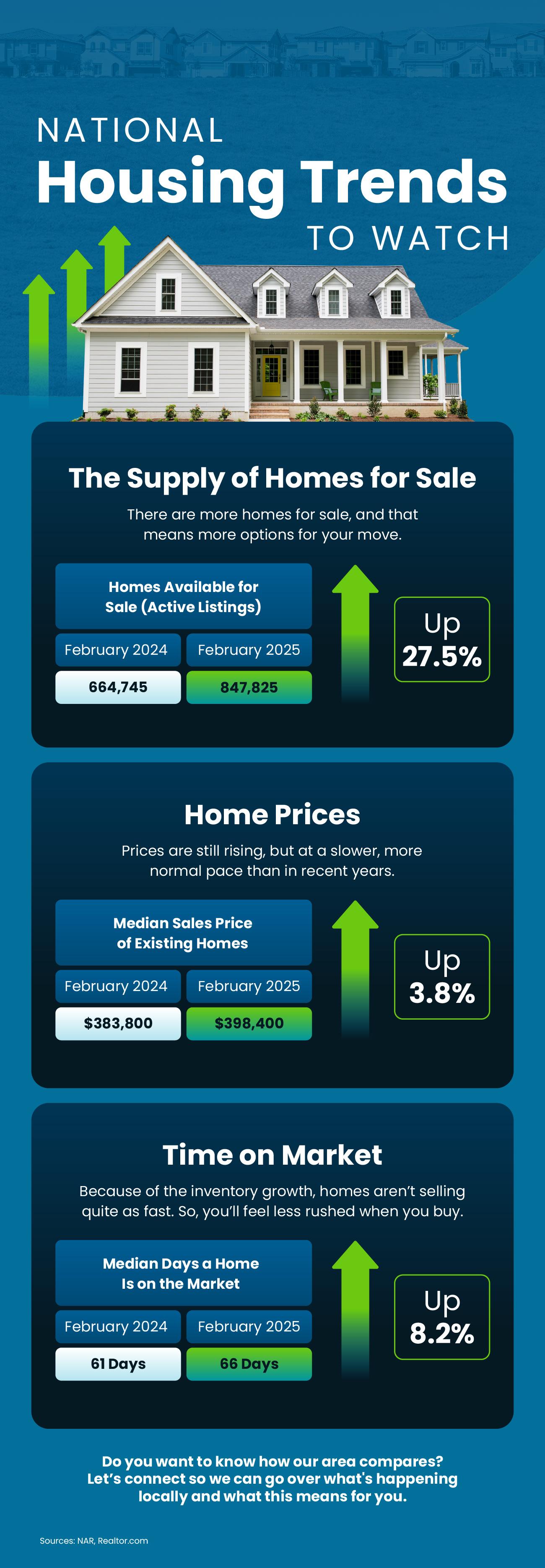National housing trends are shifting as the market adapts to new economic realities. As we move into 2025, several key factors are influencing home prices, inventory levels, and buyer-seller dynamics across the United States.
Home Price Trends
Nationally, home prices have seen significant fluctuations over the past few years, with current prices approximately 55% higher than pre-pandemic levels. However, recent data indicates a cooling trend in home prices. For instance, the First American Data & Analytics Home Price Index reported that national home prices rose only 0.1% from November to December 2024, suggesting a stabilization after a period of rapid growth1.
Certain regions are experiencing more pronounced changes. States like Wyoming and Rhode Island have reported substantial year-over-year gains, while areas such as Florida and Hawaii saw slight declines in home values1. Economists predict that as inventory levels rise, particularly in the southeastern and western U.S., home price appreciation will slow, contributing to improved affordability for buyers.
Inventory Dynamics
The inventory of homes for sale remains a critical factor in shaping the housing market landscape. As of February 2025, national active housing inventory was still 23% below pre-pandemic levels from February 2019. However, some markets are experiencing tighter conditions than others. For example, 50 major housing markets still have at least 46% less active inventory compared to pre-pandemic levels, maintaining a seller’s advantage in these areas.
Conversely, markets in the Gulf Coast and Mountain West regions are seeing an increase in available homes, allowing buyers more leverage. These regions faced challenges due to high home price growth during the pandemic and are now adjusting to local income levels as migration patterns shift.
Regional Variations
The Northeast continues to exhibit robust home price growth despite national trends toward cooling. This region has been less impacted by pandemic-era migration patterns, resulting in tighter inventory and sustained demand2. In contrast, markets in states like Texas and Florida are softening due to an influx of new construction and rising mortgage rates that have dampened buyer enthusiasm.

The S&P CoreLogic Case-Shiller Home Price Index also reflects these regional disparities, with the Northeast averaging a 6.1% annual gain compared to much lower growth rates in other regions1. This divergence indicates that while some areas may struggle with affordability issues, others remain competitive.
Future Outlook
Looking ahead, several trends are expected to shape the housing market through 2025:
- Moderate Price Appreciation: Experts anticipate that if current conditions persist—higher mortgage rates combined with increased inventory—home price growth will remain moderate across many markets.
- Shift in Buyer Power: As more homes become available for sale, buyers may gain leverage in negotiations, potentially leading to downward pressure on prices in certain markets1.
- Impact of Mortgage Rates: The trajectory of mortgage rates will play a crucial role in determining buyer activity and overall market health. Higher rates could continue to suppress demand while increasing affordability challenges for new buyers.
In summary, as we progress through 2025, understanding these national housing trends will be essential for both buyers and sellers navigating this evolving landscape. The interplay between inventory levels, regional dynamics, and economic factors will significantly influence market conditions moving forward.
Export.





